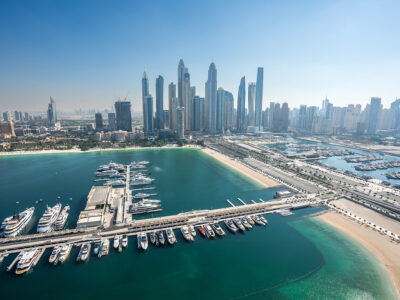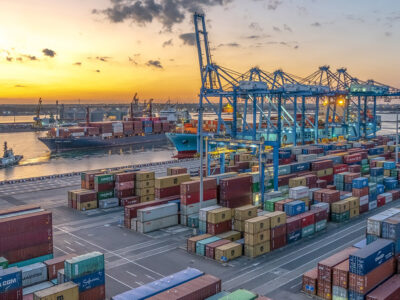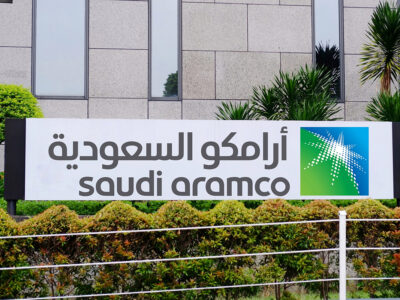Coffee at the moment fascinates me. I don’t know whether I am suffering from “the grass is greener” syndrome, but nevertheless, it’s an immensely interesting subject. Why? Because it’s a mono-product with a nice “promised-land” if you can get it right. It will never get to any level of saturation point, just an endless pursuit and evolution.
Coffee is the second most consumed drink after water. And it’s addictive. According to the coffee world, we are now in the fifth wave: “the business of coffee”. The glass ceiling is in the next wave – a perpetual motion, likened to Jim Collins Flywheel effect.
I am gravitated by its business model: low costs of entry, ease of scalability, operational efficiency and speed of the return on cash. What’s more, coffee is a “world-food” with universal appeal. It’s only a handful of mono-products which creates an emotional value: a tribe.
Conceptually I believe there are three types of format at play: Lounge Coffee (you are selling sofa and wi-fi); Café Coffee (you are selling breakfast and brunch); and Fast Coffee (you are selling specialty coffee, and this represents the majority of your sales mix).
According to the Café 2025 report on trends and vision for the future by Adam Carr, Café Coffee is the way to go with a high level of automation.
Coincidentally, I believe we are also in the Fifth Wave of Food. The manifestation of this being evolved from the First Wave as to why we eat: for nourishment. The Second Wave: for pleasure. The Third Wave: for health. The Fourth Wave: for sustainability. Now, the Fifth Wave: we eat for smart.
This is the future of food. Smart as a concept came from Biohacking. The first development of this lies in the field of drugs: Smart drugs. This evolved to smart supplements as the science shifted from treatment to prevention. Now, it has slowly penetrated the food ecosystem: Smart Food. Smart Food no longer resides in the domain of specialist health food stores.
Quality food retailers like Wholefoods are carrying more and more of these items, which have evolved from drugs to supplements to food ingredients. For the retail platforms, I believe there will be a total convergence between pharmacy, health food store, and Smart Food supermarket both online and offline.
As an observation, you could say that Amazon has already made that move by announcing a significant expansion of its online drug delivery business. The whole Smart Wave makes sense as the developed nations get wealthier in terms of disposable incomes, post-materialism sets in.
Our values changed in terms of human endeavour and aspirations. So I believe Smart provides them with not just answers, but solutions my friend. Because Smart can provide us with the relevant and of the moment human touch points which leads to happiness: the wanting to be smarter (nootropics perhaps?), the wanting to live longer (the fields of life extension?), the wanting to look younger, and the wanting to be free from the key ageing diseases: heart disease, stroke, diabetes, alzheimer’s, dementia, Parkinson’s, and cancer.
This is the future of food: a truly integrative medicine in the form of our daily food source as an enjoyable consumption, which is both directional and preventive by nature. So the supposition is: can we redefine healthcare using medicinal technology in food? Is healthy and natural living no longer enough? Can food biohacking become the medicine preventing and treating? And to shed some relevance into all this malarkey, can Smart Food migrate from Smart Food of ingredients to a complete package, recipe and dishes in order to make the crossover from retail into the eating out market? A new paradigm? Perhaps!
Could there be a multi-billion-dollar chain of Domino’s Sugar? I believe it could. For me, the trillion-dollar future of food is: Smart Kitchen.
So what’s in the concept? The hypothesis is this. What if you combine the trends and outlooks of the above: the Fifth Wave of Coffee (the business of coffee), the Fast Coffee concept, the Fifth Wave of Food (Smart), Smart Kitchen as the migratory destination to the whole evolutionary journey: the eating out market.
In the world of coffee, there is already some movement in this direction. A biohacker named Dave Asprey, the founder of Bulletproof coffee, has raised $13 million in a new funding round to expand his high-performance product growth.
At the moment, such an idea still requires empirical support between the suppositions and the wishful thinking. The hardest of this, at the conceptual development level of a new Fast Coffee concept: monetisation and level of profitability – a proof of concept. A true rationalisation and integration between business model and unit economics. The absolute essentials to measuring and improving what matters.
The light-bulb moment came in the form of a subscription model. An idea brought about by Pret during the UK’s first lockdown period as a way to galvanise the tribes back into drinking coffee again. Purely as a market loss leader instrument. But what if you want to make that, the subscription model, into your main revenue model? From a consumer perspective, this is a good idea because you are using one of the best emotional hot-buttons for leveraging higher demands: greed. To make the model work, we need to look at SaaS companies like Netflix which sells software to watch videos on demand – a subscription-based model.
The problem with the food and beverage business is that your P&L does not behave in the same way as SaaS companies. Your key variable costs, coffee, stays with you regardless of volume. So can you truly get to economies of scale without the variable costs of coffee gets in the way of break-even and profit? And there’s no doubt that a subscription model would bring in the volume. But the volume would also bring the other negative actor: marginal cost. Specifically in the area of requiring extra baristas to cope with the increase in volume.
One solution for the future is through automation, such as the works being done by Eversys and Danish collaborative which integrate the Espresso machine and robotic arms underpinned by a OS system as a way to wholly replace human baristas – the marginal cost.
These are my personal observations and concept development journey. This is what I think is missing or at least, under-represented in the GCC.
The Fifth wave – the business of coffee, is an interesting time. It will usher in a new era in the same way the burger market has been disrupted by the ‘better burger’ competitions. The likes of FIVE GUYS and Shake Shack’s have created a different level of not just price and quality market segmentation, but it has also evolved the burger game for the next decade.
The key players in coffee, in this scenario, still have a long way to go. Brands like Blue Bottle and Arabica Coffee are still relatively small in terms of numbers and global reach. But in the Middle East, Arabica Coffee, especially in Kuwait, have certainly demonstrated the market readiness for the Fifth wave: quality boutique chain at scale.
For the F&B industry in general, I believe there will be a shift in the region, away from the licensed brands to something much more real, locally originated start-ups led by independent entrepreneurs, driven by passion.
Alan Yau (OBE) recently discussed the future of food at the King Abdulaziz Centre for World Culture’s (Ithra) creativity and innovation conference Tanween.





